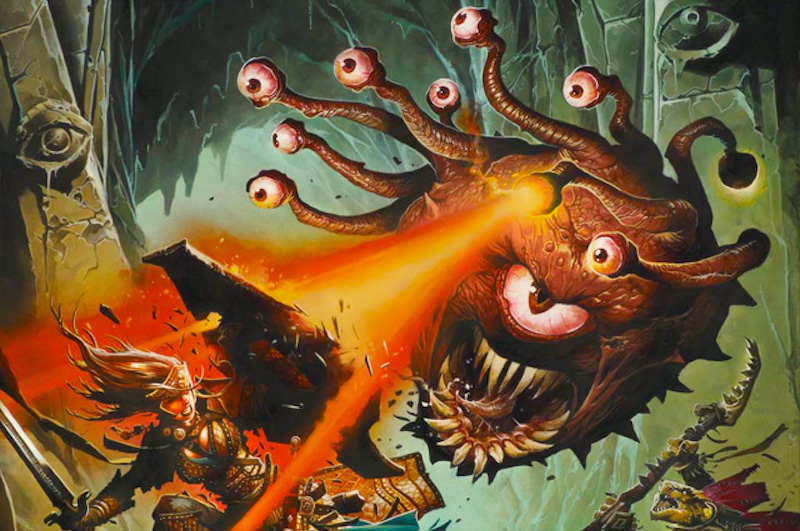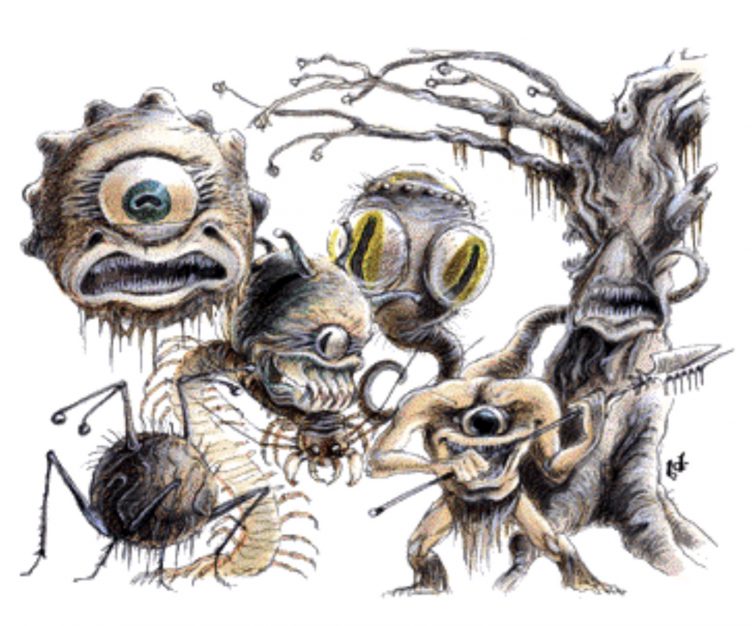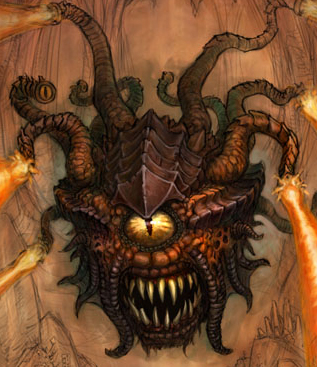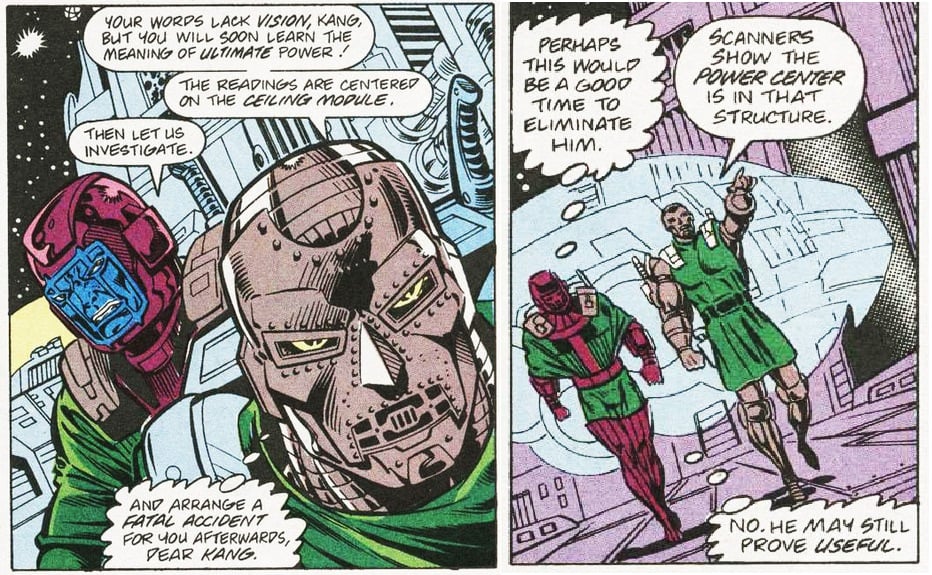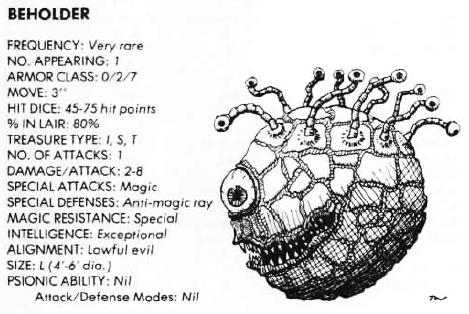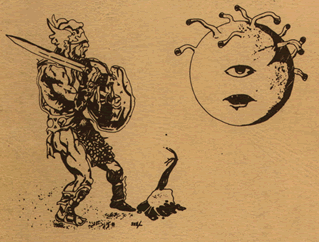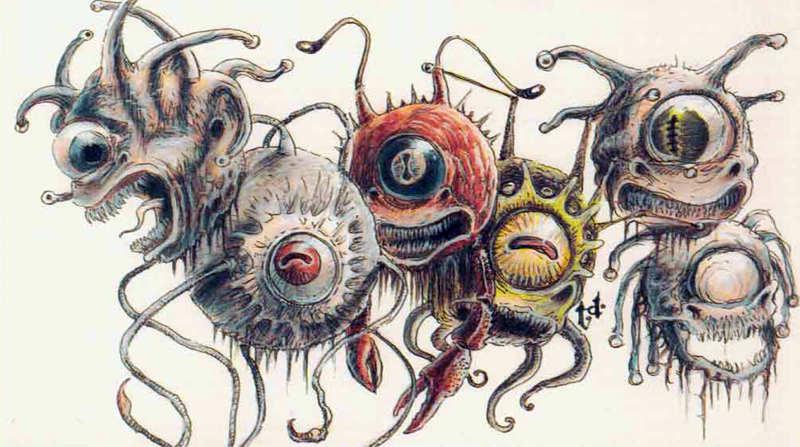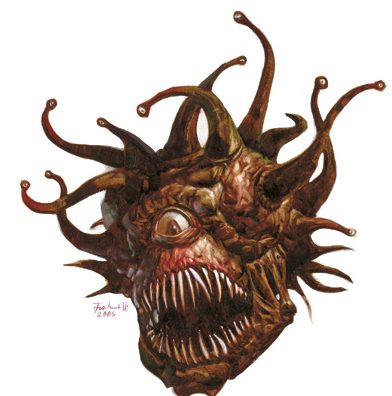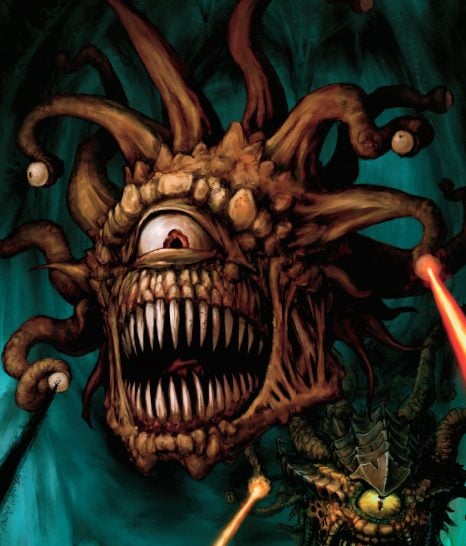Monster Spotlight: D&D’s Beholder

Both beauty and an antimagic cone are in the eye of this week’s monster…
This week we’re braving strange vertically arranged lairs, traps born of a homicidal, xenophobic paranoia, and all manner of eye rays to bring you the one and only Beholder. Wait, no this one’s just a Mindwitness…aha here it–nope, this is a gauth…how abou–an overseer? And you’re a spectator? Death tyrant? Well I’m sure one of these is the actual beholder. And since beholders, unlike the real slim shady, cannot stand up (they’re legless and they hover instead) I guess we’ll put them all in the spotligh–xenophobic even against themselves you say. Oh dear.
I’m sure this will all workout fine…
Ah Beholders. It doesn’t get any more iconic than that in Dungeons and Dragons. As long as you ignore the fact that dragons exist and are literally right there in the name, so I guess they’re the iconic D&D monster, but even so, Beholders are still pretty eye-conic. After all they’re another of the monsters that have been around since before D&D was D&D. Much like Owlbears, they originated in 1975 in Dungeons and Dragons’ first supplement, Greyhawk, where they were described as avaricious and chaotic in nature:
“These monsters are also known as Spheres of Many Eyes, or as Eye Tyrants. The body of these creatures is a great globe of about 3′ in diameter. Atop it are ten eye stalks, while in the center of the spherical body is a great eleventh eye.”
It just didn’t have time for any of this.
1st Edition Beholders got a little more complex, though. Firstly doubling the damage of their iconic bite attack to 2d4. Additionally the rules for attacking it were a little more refined–there was a 75% chance of targeting the body with one of the attacks, or a much lesser chance of targeting its more vulnerable parts. This is also where the beginnings of that over-the-top personality come into play: 1st Edition Beholders have a 50% chance to listen to negotiations “either to be bribed not to attack, or to pay a ransom to not be attacked” depending on the strength of its opponents.
2nd Edition Beholders are a veritable cornucopia of options. Whereas most of the monsters in early editions tended to only come in one or two flavors, you have a whole rainbow of beholders to taste–although having typed that, I wouldn’t recommend actually tasting a beholder.
Especially one of the poison ones.
At any rate, 2nd Edition beholders owe their variety to Spelljammer. Beholders were a sort of featured monster in that supplement, whether floating out there in wildspace, or captaining one of a dozen varieties of different beholder ships. This is where the beholders’ xenophobia comes into play, actually. The whole resaon they are intolerant to others of their kind is that the designer for Spelljammer liked the various designs submitted for the beholder ships, and so ran them all, and went with xenophobia to other subtypes as a reason for the variety.
And man, were there a ton of variants. You have the one with poison stingers instead of eyes, the crustacean one, the undead one, the one with no eyes, the one with tentacles–they all function slightly differently–and of course, each one believed itself to be the pinnacle of beholderdom.
3rd Edition beholders, hilariously, have flyby attack, among other things. Aside from that, they are largely unchanged, conceptually, from their earlier counterparts. But they’re a classic for a reason. Their eye rays are largely unchanged (though the spell effects themselves vary), they got a little killier and more resilient with a massive boost to their hit dice and hit points.
Okay, the 4th Edition beholder is having the best day of its life. Granted it’s technically an eye of flame and the Beholder is the one glowering there in the background, but look at that big old grin. That is the grin of someone who has gained the ability to shoot eye rays at will, and has the ability to direct them much more freely than in previous editions. It also gained a number of eye-ray based powers, which allowed it to rain devastating arcane artillery on its opponents at any tier (there were beholders appropriate for heroic [eye of flame], paragon [beholder], or epic [ULTIMATE TYRANT]).
4th Edition’s modular design brought back a ton of the crazy varieties of beholders. In addition to the two mentioned above, there were also frost beholders, ghost beholders, shadow beholders–though none were quite as varied as the crazy tree beholder from 2nd edition, they did represent threats that felt different whenever encountered.
5th Edition Beholders are a return to classic form. They have everything that you know and love about beholders. Their eye rays, their hovering, their bite attacks–everything. They’re much hardier than the 3rd edition beholders–though it’s hard to compare with the 4th edition CR 29 ULTIMATE TYRANT in terms of hit points.
What’s more, with the release of Volo’s Guide, beholder society was expanded beyond even the Spelljammer days. They are insane–functional, intelligent, but insane. They are creatures of madness who reproduce via strange dreams that have–no joke. Sometimes, a beholder might dream of another beholder, or of seeing its reflection. When this happens, the beholder might spontaneously cause one of its fellows to appear–creating a new one.
Naturally they immediately fight each other for dominance. Death Tyrants come about when a beholder, paranoid of dying, has a dream that it performs an arcane ritual and becomes undead–this traumatizes the nascent beholder/death tyrant so much that it transfigures into the terrifying skull/gem monster that everyone knows and fears.
So there you have it. Beholders are amazing, and you should give one (or preferably more) a try today.
Curious about how many beholders is too many? You just have to eyeball it.

